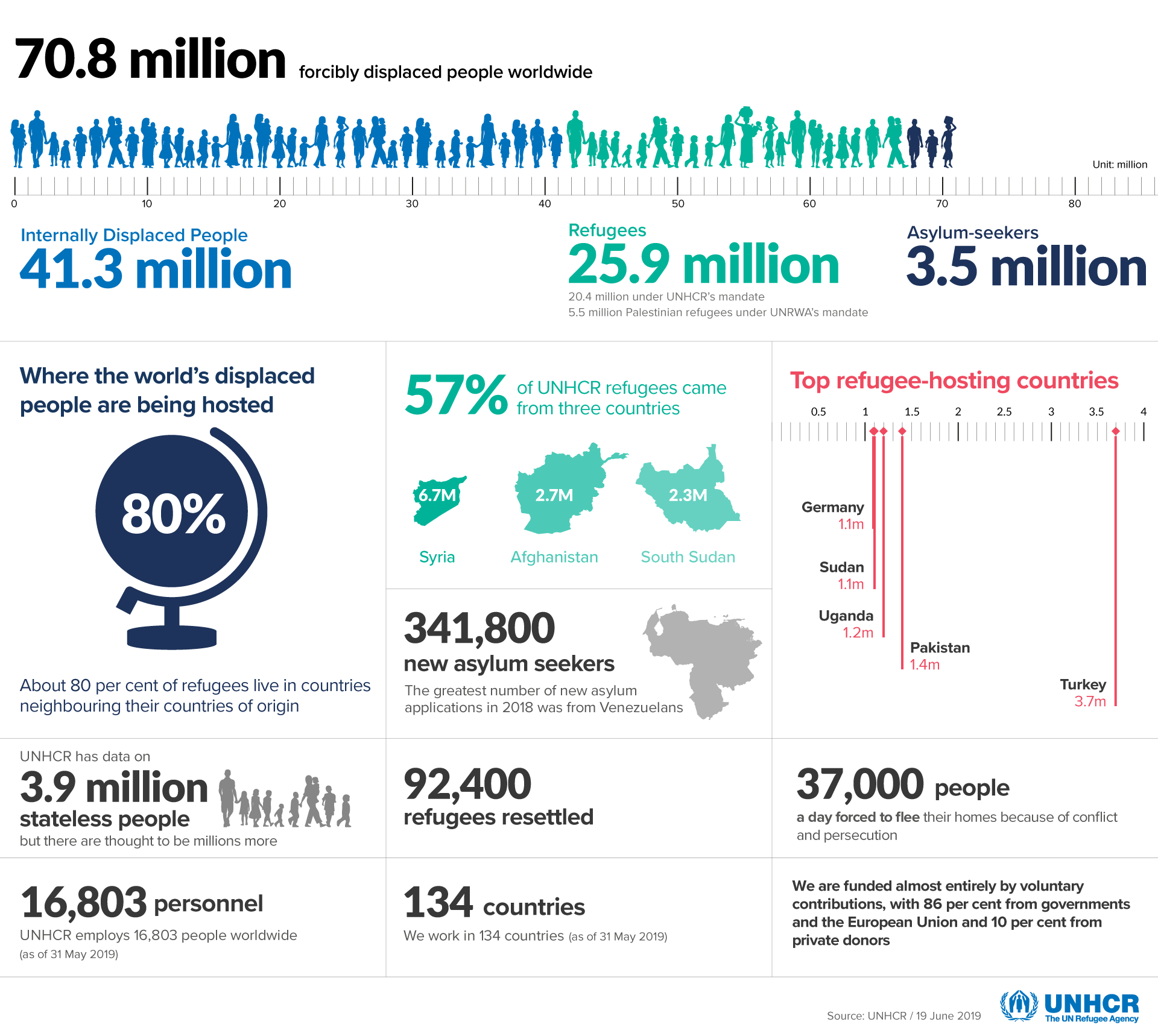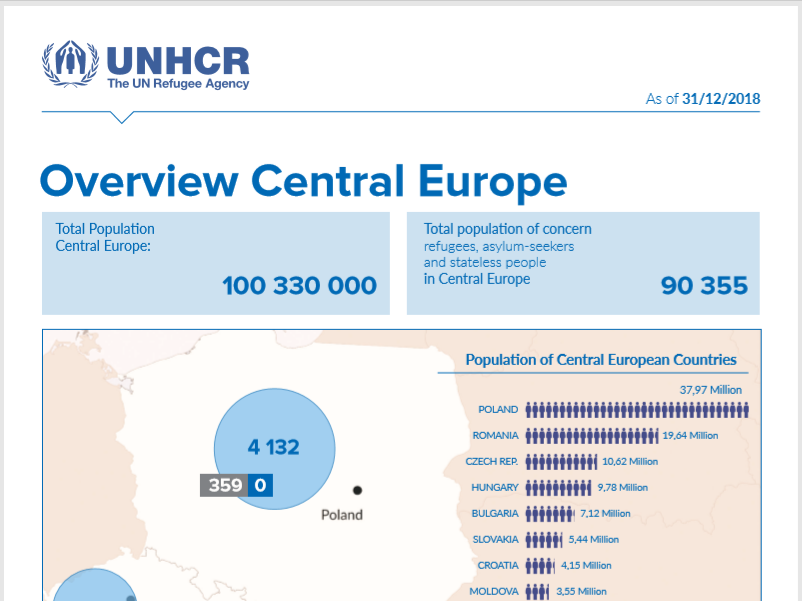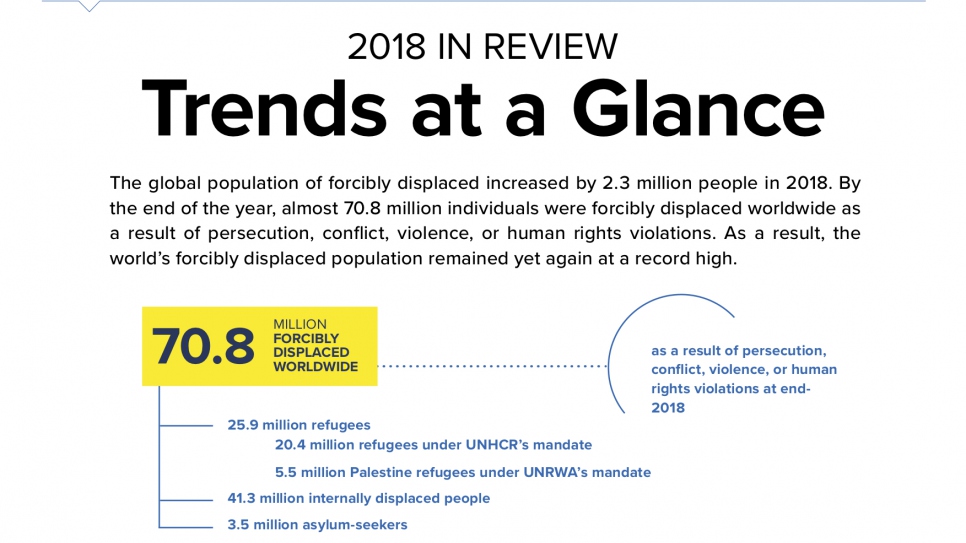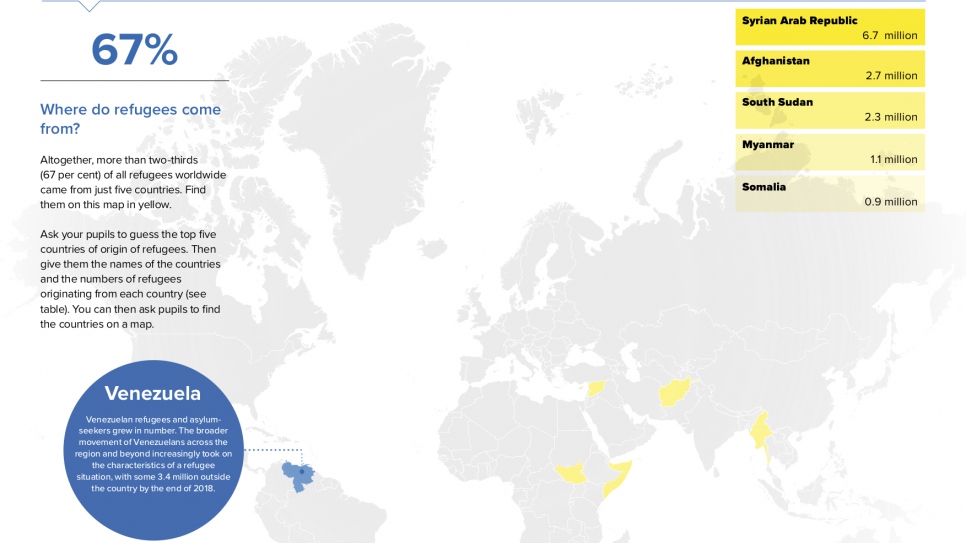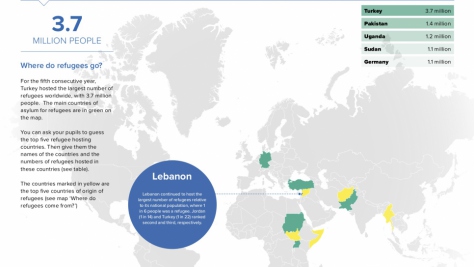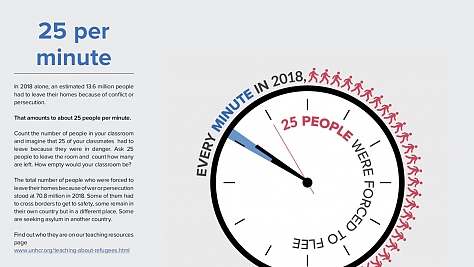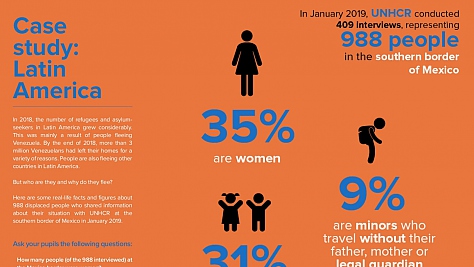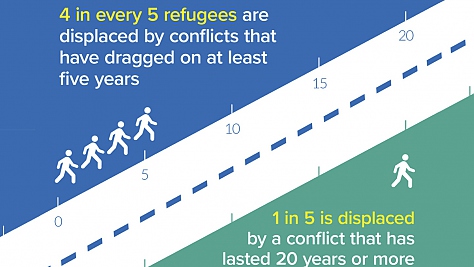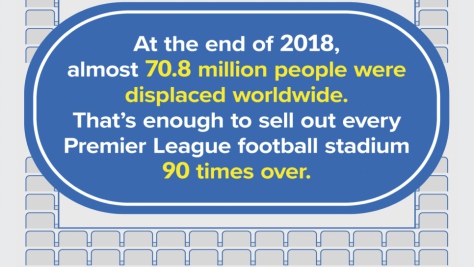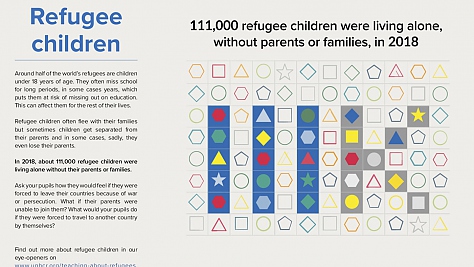Finding the right facts and figures about refugees and migrants can be a challenge. There is a plethora of information available on the internet from thousands of sources. This sections serves as a first-hand resource for data on regfugees.
On this page you will find:
Fact Sheets and Figures about Refugees in Romania
Overview Central Europe Fact Sheet
This document offers and overview on the UNHCR Central Europe Region (Poland, Czeck Republic, Slovakia, Hungary, Slovenia, Croatia, Romania, Bulgaria and Republic of Moldova) in terms of the total number of persons of concern, granted international protection and relocated. Click on the title to download the Fact Sheet.
Romania Fact Sheet
This document offers and overview on the UNHCR Romania in terms of the total number of persons of concern granted international protection and relocated, as well as arrival trends. Click on the title to download the Fact Sheet.
Emercency Transit Centre Fact Sheet
On 8 May 2008 the Tri-Partite Agreement establishing the Emergency Transit Centre (ETC) in Timisoara was signed by the Government of Romania, the International Organization for Migration (IOM) and the United Nations High Commissioner for Refugees (UNHCR).
Click on the title to read the whole document.
Emergency Transit Centre Monthly Reports
Archive: March 2020 | February 2020 | January 2020 | December 2019
This document offers and overview on the refugees using the Emergency Transit centre in Timisoara, in terms of numbers, demographics, countires of origin / first asylum / resettlement, as well as the vancancy and ocupancy of the centrer. Click on the title to see the reports, as of December 2019.
Fact Sheets and figures about refugees Worldwide
UNHCR helps forcibly displaced people worldwide. We keep detailed, up-to-date statistics and data on refugees, asylum-seekers, IDPs and stateless people. In this section you will find a selection of teachers’ notes and fact sheets you may find useful for your lessons. You can create your own lesson by using and combining the materials as you see fit.
How many people are displaced?
More than 70 million people are displaced today.This is the highest number since WWII. Find all the key figures on this file.
Where do refugees come from?
More than two-thirds of the world’s refugees come from just five countries. Find them on the map in this file.
Where are refugees?
Almost 9 out of 10 refugees are in developing countries. Find the countries and the figures on the map in this file.
Eye-openers
More than 70 million people are forcibly displaced today. That means they are in danger because of violence, war or persecution and had to leave their houses and go elsewhere to be safe. They now live as refugees, internally displaced people or asylum-seekers. (Watch the materials in the Words Matter section if you want to know what these categories mean)
But what does 70 million people really mean? Why do so many people flee? How many are women? How many are children? How long do people live as refugees? Use these teacher notes to reflect with your pupils on refugee numbers. Link what you teach to the life of refugees and to their own life in school and elsewhere. Suitable for teaching children in secondary education (age 12 and over).
25 persons per minute
Every minute, 25 persons are forced to flee because of violence or persecution. A staggering number.
Case Study Latin America
Many people are fleeing violence and persecution in Latin America. In January 2019 UNHCR questioned almost 1,000 displaced people at the border of Mexico.
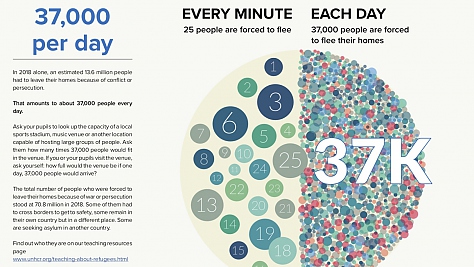
Refugee for a long time
Many people live as refugees for a very long time. Find out how many people had to flee their homes for 5 years… or much longer.
More than 70 million
More than 70 million people are now displaced worldwide. How many football stadiums could you fill with such an enormous population?
Children fleeing by themselves
Many refugees are children younger than 18. 111,000 of them had to get to safety without their family or parents. What would your pupils do if they had to flee without their parents or family?
UNHCR media materials and reports
If you want to read more about refugees, asylum and migration to prepare your lessons, you can read UNHCR’s main publications and on-line resources on refugees, asylum and migration. Some of these materials may also be used for research assignments for children in higher secondary education.

Global trends
UNHCR’s reports contain all details on forced displacement in the world.

UNHCR Data Portal
UNHCR’s facts and figures website on refugee emergencies. Click on the locators to view the latest maps, tables and graphics on refugee emergencies.

2019 education report
More than half of the world’s school-age refugee children do not get an education. This report tells the stories of some of the world’s 7.1 million refugee children of school age under UNHCR’s mandate.

UNHCR multi-media
If you are looking for a compelling video, web article, photo report or other multi-media story on refugees, please visit UNHCR’s multi-media channels.

